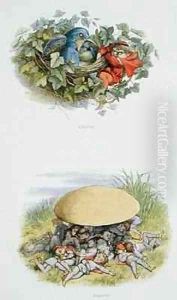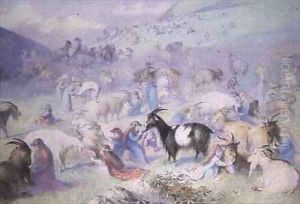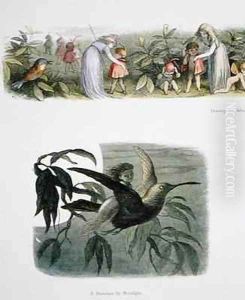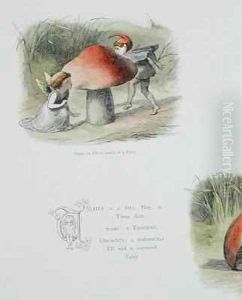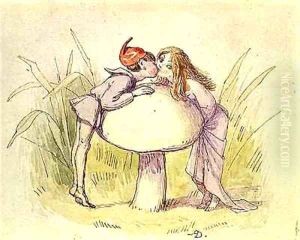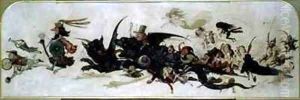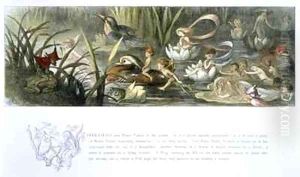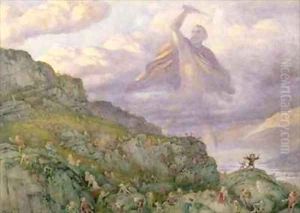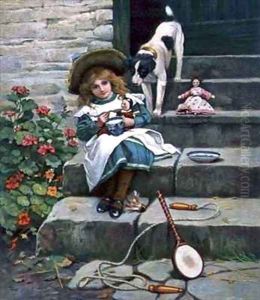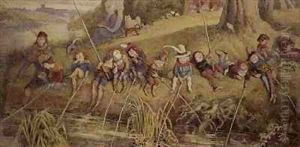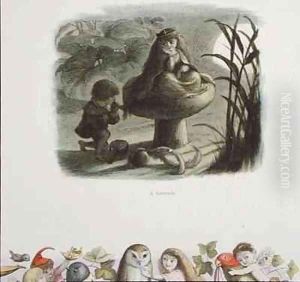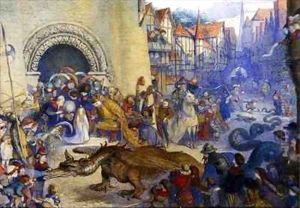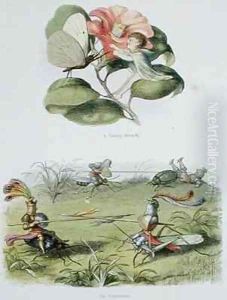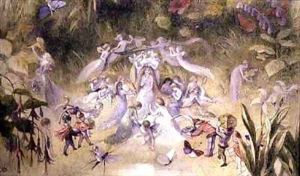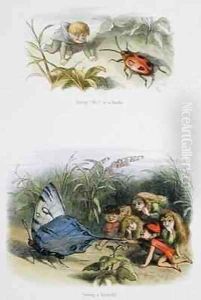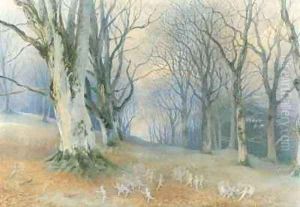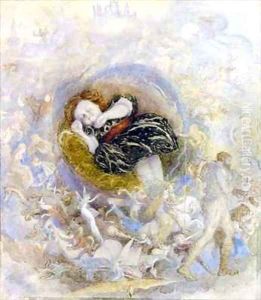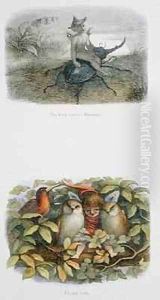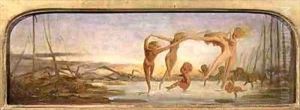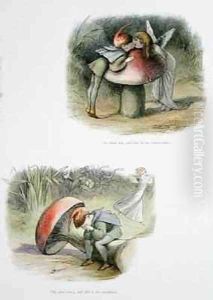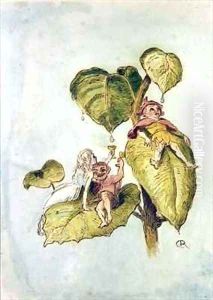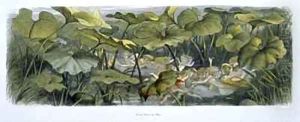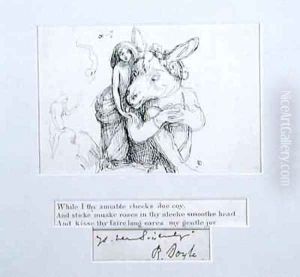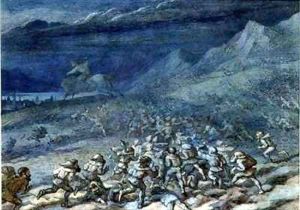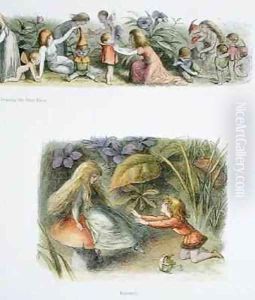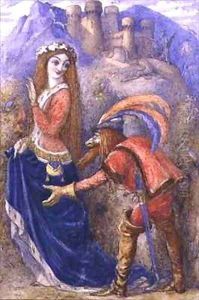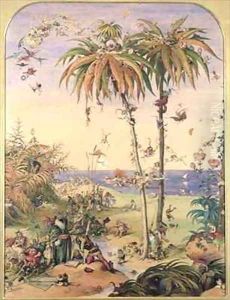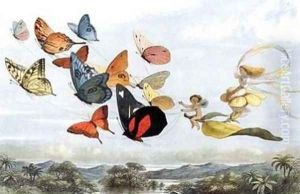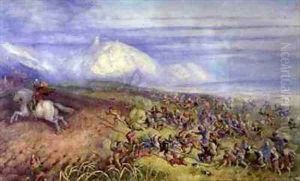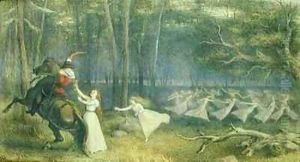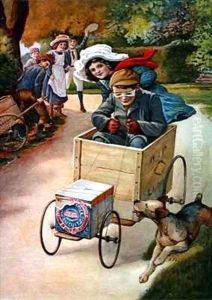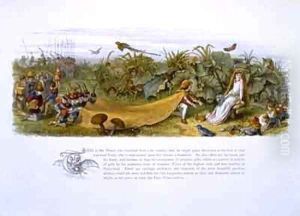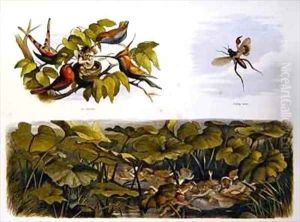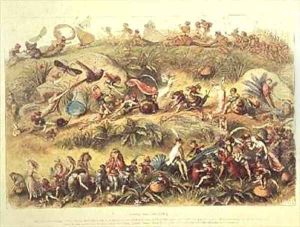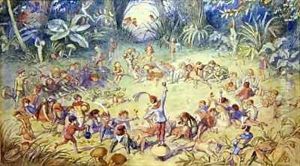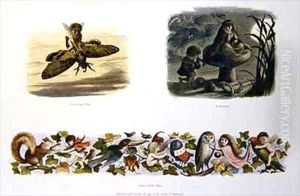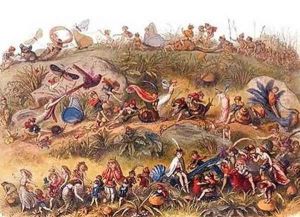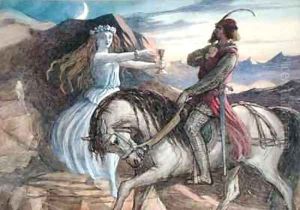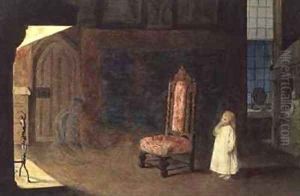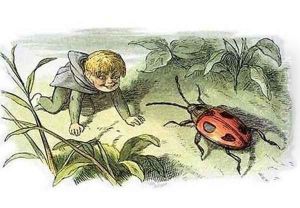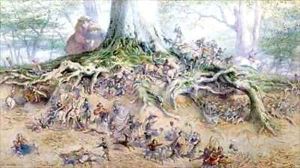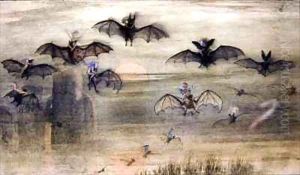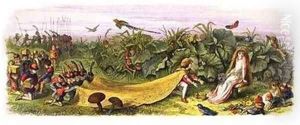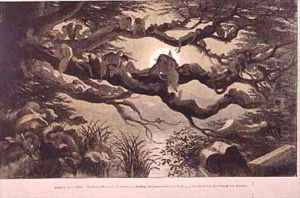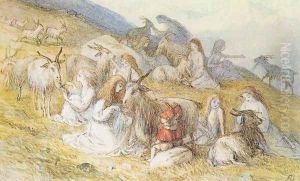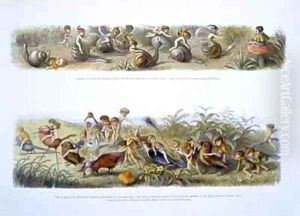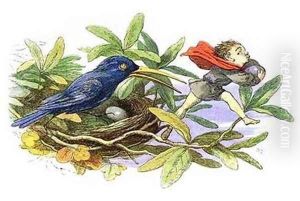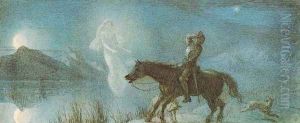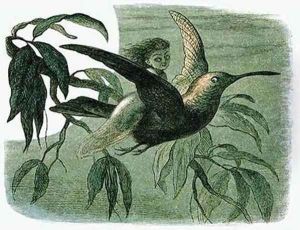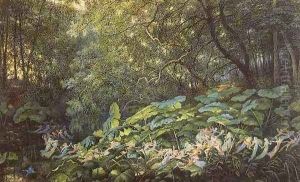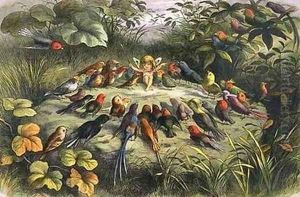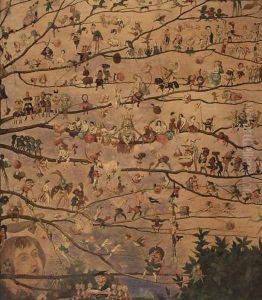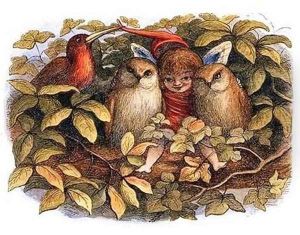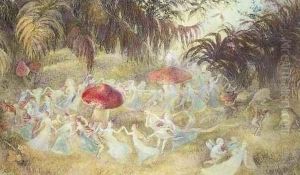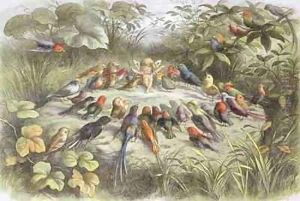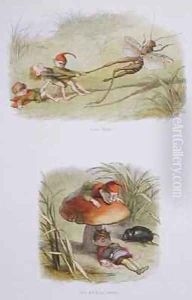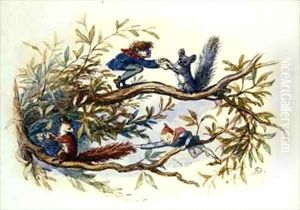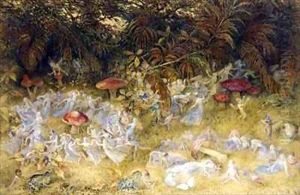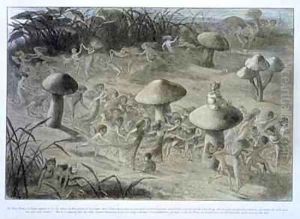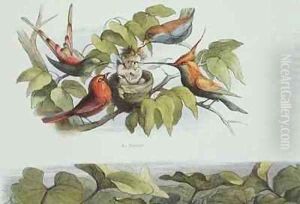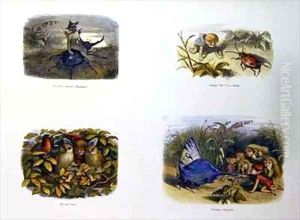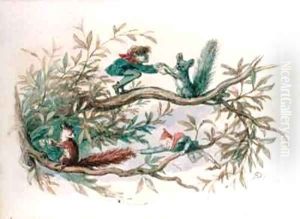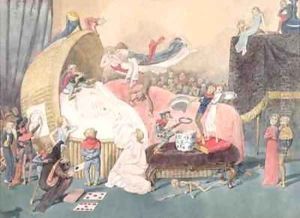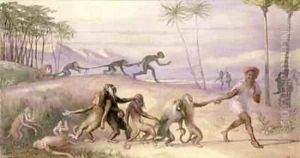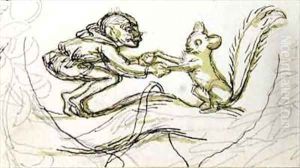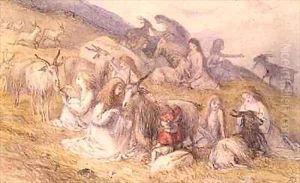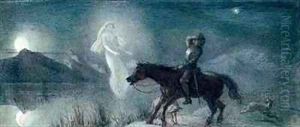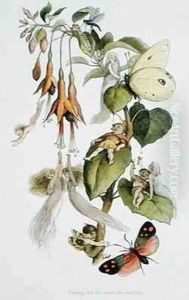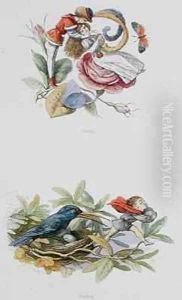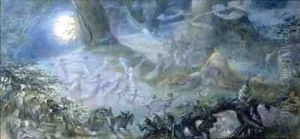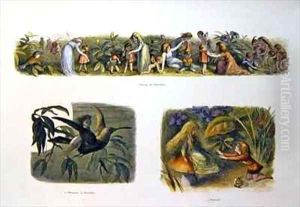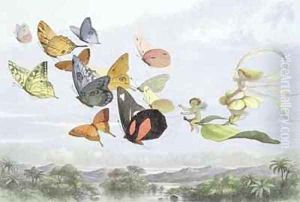Richard Doyle Paintings
Richard Doyle was a notable British illustrator and cartoonist in the 19th century, born on September 18, 1824, in London, England. Coming from a family with a strong artistic heritage, his father, John Doyle (known by the pseudonym 'HB'), was a famous caricaturist, and his uncle, James Doyle, was also a well-regarded illustrator. This environment undoubtedly influenced Richard's career path from an early age.
Richard Doyle showed an early talent for art, and by the age of 16, he was already contributing to various periodicals, including Punch, a magazine known for its humorous and satirical illustrations. In 1843, Doyle became one of the initial staff members of Punch, significantly contributing to its style and success. However, he resigned in 1850 due to disagreements over the magazine's editorial policies, particularly its stance on the Catholic Church, to which Doyle was devoted.
Apart from his work in Punch, Doyle was renowned for his book illustrations. He illustrated for the works of Charles Dickens, John Ruskin, and other prominent authors of his time. Perhaps his most famous work is the design of the cover of Punch magazine, which he created in 1849 and remained in use for over a century. Doyle's illustrations were characterized by their detailed fantasy and whimsy, often featuring fairies and elves, which reflected his interest in folklore and fairy tales. His work in the genre of fairy illustration contributed significantly to the Victorian fascination with fairy tales, influencing a wide array of artists and writers.
In addition to his illustrations, Doyle also published several of his own books, including 'In Fairyland: A Series of Pictures from the Elf-World' (1870), with a poem by William Allingham. This work is particularly noted for its rich, imaginative illustrations and stands as a testament to Doyle's skill and creativity in the realm of fantasy art.
Richard Doyle passed away on December 10, 1883, in London. His legacy lives on through his enchanting illustrations, which continue to captivate audiences with their whimsy and intricate detail. Doyle's contribution to the field of illustration and his role in popularizing the fairy genre in Victorian England mark him as a significant figure in the history of British art.
